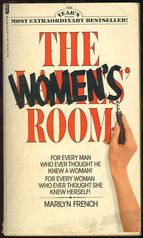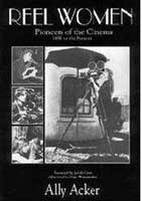|
Blake Morrison, And When Did You Last See Your Father? London: Granta Publications, 1995 Blake Morrison, Things My Mother Never Told Me London: Chatto and Windus, 2002 It is unusual for an author to write companion volumes of memoir about both his father and his mother. Neither parent was a literary or public figure unlike the four generations of Waugh writers whose lives and work were explored in the family memoir Fathers and Sons by Alexander Waugh. So how does Blake Morrison elevate his portrait of a marriage between two medical professionals - he himself states the subject matter is not ‘earth shattering’ - into the realm of literary memoir? The first book, And When Did You See Your father? was award-winning and adapted into a high budget British feature film and the second was shortlisted for the WH Smith biography and autobiography awards. The answer lies in the fascinating blend of personal memoir and Morrison’s reflections on the dilemmas and challenges of writing biography which really gains momentum when he discusses his discovery of his parents’ love letters in Things My Mother Never Told Me. Morrison is a journalist and literary critic, a teacher of life writing and a natural and compelling storyteller who understands the power of unsentimental, frank enquiry. He is also a poet and there are passages of exquisite poetic prose and heightened observation running through both memoirs. In a scene from And When Did You Last See Your Father? Blake returns home, after his father’s death, to visit his mother, “I sit with my mother outside the study, two recliners and two teas in the wind, and her words stream over me – an undammed beck, the release and relief of talking to someone. The hay has turned from green to brass, and the wind passes through it like a flu-shiver. It’s more beautiful than I’ve ever seen it...” And so is his writing.
Successful autobiographies and memoirs draw on fictional techniques to infuse life and drama into the characterisation of key figures and the unfolding narrative. In the first memoir where Morrison seeks to answer the question, when was the last time he saw his father, really saw him for who he was, he constructs a vivid and appealingly human portrait. Dr Arthur Morrison is a larger than life, rumbustious and cocky character. He is also emotional, fallible and flawed. The opening scene where Arthur jumps a traffic queue, pulls out into the opposite lane, dangling his stethoscope from the rear-vision mirror as his wife and children (a young Blake and his sister) slide down their seats in embarrassment has the feel of Toad of Toad Hall parping his horn in his shiny new motor car. The reader is immediately hooked. But Blake Morrison can also change the mood and write with delicacy about the bigger themes of human existence – love, loss and betrayal - most notably about his father’s death. At his bedside Morrison shares his father’s final moments: His breathing has changed in some way – my mother remarks on it – slower, though still regular. Then he gives a slightly bigger breath than usual – and stops. I nod at my mother. After about half a minute, he breathes again, lightly, a wisp only, and she puts her left hand to her chest, as if to say, Christ what a relief, I thought he was gone. Then nothing again. Another half minute, another wisp. Then silence. And more silence, restful. I look at his clock: seven o’clock. Then at hers: seven-ten. It is very quiet: I can hear only the distant cawing of rooks. He is dead, and I feel an odd triumph about it. He is dead, the thing (when I was small) I used to dread more than any other, but I’m still here, my mother’s still here, I can hear her breathing, the world has ended but we’ve survived, we’re OK. Encouraged by the success of the first memoir Blake Morrison followed with the second, Things My Mother Never Told Me about his mother, a more elusive figure whom he struggled to know and understand. Agnes O’Shea was one of 20 siblings from County Kerry. A clever and determined young woman, she left Ireland in 1942 with a medical degree intent on furthering her career in England. During World War Two she trained as a surgeon and obstetrician and it was in 1943 at a party in Salford near Manchester that she met her future husband and slowly succumbed to his charms and his will. The Morrison family disapproved of Catholicism and at Arthur’s request she changed her name to Kim. The author suggests that his mother was the more gifted of the two but she appears to have meekly given away her career in surgery for a life as Arthur’s wife. At their very first meeting, Arthur exclaims, “Ye Gods, they’ve appointed a woman’ and jests, ‘I hear in Ireland you can qualify in six months,’ to which she quickly retorts, ‘Three months… if you’re a girl.’ Glimpses of the contrast between his mother’s work saving the lives of mothers and babies in war bombed England while his father is idle in the RAF stationed in the Azores hint at a troubling dynamic which will undermine the relationship. Morrison suggests his father felt inferior and the cost for his mother in sublimating her talent and tolerating her husband’s affair was migraines and depression. Actually his mother did return to work but for the most part on her husband’s terms and she tried not to disrupt her children’s lives. Kim Morrison worked in Arthur’s Yorkshire GP practice and after the two children were born she set up an antenatal clinic and delivered babies at a local maternity hospital. In a stark statement Morrison reflects, ‘as a child I didn’t feel unloved but sometimes I felt unmothered.’ Perhaps these are the reasons why his mother’s personality does not lift off the page and resonate as powerfully as his father’s. The substance of Things My Mother Never Told Me is based on Morrison’s analysis and citation of a large repository of his parents’ wartime correspondence discovered under his father’s desk following his death. And herein begins the reflexive strand whereby Morrison exposes his investigative process and discusses the ethical dilemmas, his ‘guilty voyeurism,’ that the discovery and revelation of the correspondence poses. The method is reminiscent of Janet Malcolm’s examination of biographical process in The Silent Woman: Sylvia Plath and Ted Hughes. He writes; “How did I feel reading their letters?” He cleverly turns the question on the reader; “How would you have felt? I felt excited, guilty lucky, furtive, amazed.” He continues, “I thought it was miraculous to encounter my parents like this when they weren’t my parents before they married…” The story of the romance, as told through the letters and commented on and imagined by Morrison, ends on page 281 with the couple’s honeymoon at the Strand Palace Hotel in London. The final 58 pages summarize the marriage and family life that followed and Morrison’s mother’s declining health. A photograph of the couple on their honeymoon shows the couple, faces touching, Kim laughing coyly with downcast eyes and Arthur smiling confidently at the camera and looking strikingly like his author son. It is a poignant image, given what we already know about the couple’s failure to achieve the potential of the love expressed in that moment. As you read both memoirs you might consider how effectively Blake Morrison treads the delicate line between creating a compassionate and intelligent explication of his parents’ lives, one that illuminates our own struggles and experiences and an exposé that exploits the couple’s privacy. Morrison’s mother thought the letters should be discarded but he stole them away - ‘a shit’s trick’ - because he perceived their value for his project. Perhaps what saves the situation is that Morrison is acutely aware of the issues and alerts us to the pitfalls of his approach. When he writes of the gaps in his parents’ correspondence he acknowledges how this allows them some privacy and stops him listening in on those particular conversations. If you are fortunate enough to have access to the personal letters and diaries of people close to you and are considering using them in your own writing then the discussion in the second memoir will be of considerable interest. These two books with their blend of memoir, reportage, biography, sociology, psychology and fiction illustrate the variety of ways into life writing by one of the finest practitioners of the new craft. The author’s thoughtful analysis and intelligent reviewing of his own motivations and feelings combined with a son’s affectionate celebration of his parents’ lives make these books, to my mind, amongst the most stimulating and satisfying on the subject. Comments are closed.
|
Author Reviews
All
|








 RSS Feed
RSS Feed